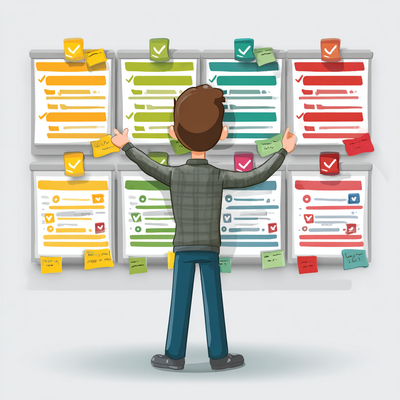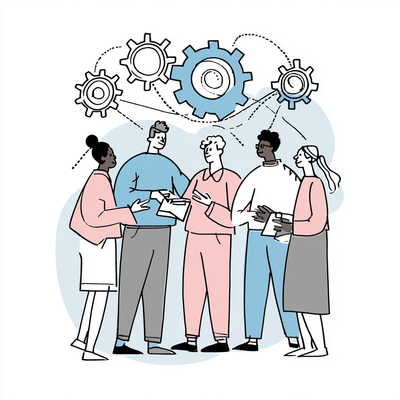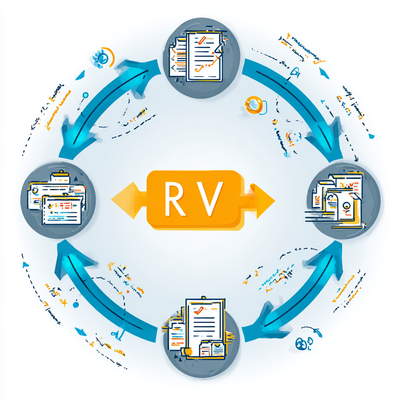Dependencies and dependency maps
In today's agile workplace, dependency management has evolved into an art form. Teams must remain nimble, adapting their workflows while respecting these crucial task relationships.
Replenishment signals
At its core, the replenishment signal framework transforms inventory management from a reactive process into a proactive strategy.
Service Level Agreement
A Service Level Agreement sets specific performance and quality expectations between service providers and clients.
Infinite buffers
Product Owners create infinite buffers by continuously adding backlog items without clear prioritization.
Cumulative flow diagrams
Teams can use the cumulative flow diagrams to understand how work progresses, identify bottlenecks, and determine the appropriate pace of work.
Flow efficiency
Flow efficiency measures a process's efficiency by comparing the time spent actively working on it with the total time required to complete it.
Blockers in agile and kanban
An impediment, also known as a blocker, is an obstacle preventing team members from completing tasks or achieving sprint goals. Various types of blockers need to be addressed immediately to maintain a smooth workflow
Cycle time and lead time
To improve cycle time, focus on streamlining your actual work processes. For lead time improvements, look at reducing delays between stages.
Pull criteria
Pull criteria in Kanban are a task's requirements before proceeding to the next stage.
Service classes
The principle of service classes, a key component of Lean methodology, is instrumental in efficiently organising, prioritising, and managing work.
The seven wastes
Taichi Ohno identified seven types of waste that do not add value to the customer. The wastes were categorised to assist employees in systematically identifying and eliminating them.
Minimum viable teams
The power of minimum viable teams lies in their streamlined communication channels. With fewer members, information flows naturally and decisions happen swiftly.
Self-organising teams
Self-organising teams are groups that work together toward a common goal, making decisions and managing tasks without supervision or authority from an outside source.
Sprint velocity
In agile methods, a consistent velocity is an important indicator of a well-functioning development process.
Scaled Agile Framework (SAFe)
SAFe, or scaled agile framework, was developed by Dean Leffingwell and Drew Jemilo to address a businesses' evolving needs.
Technical debt
According to industry observations, design trade-offs result in the most significant technical debt, which code quality measurements cannot detect. Assessing technical debt in industry and research is difficult due to the lack of practical tools.
Feature-driven development
Coding standards, measurement audits, and metrics are crucial to F.D.D.'s quality concept. Feature-driven development prioritises meetings compared to other methodologies (such as Scrum and XP).
Disciplined agile delivery
According to the Disciplined Agile Process (D.A.D.), stakeholders recognize that external customers are not always the project's focus. The term "customer" has become popular among some software teams because it has shifted their focus from technology to business needs.
Clean code in software development
Writing code that's easy to read and understand is essential to ensuring clean code. This enables others to comprehend its purpose at a glance.
The burndown chart
Scrum teams generally use the burndown chart to communicate and track their overall progress throughout the Release lifetime.
Release planning
A release roadmap is a document that outlines the schedule and objectives for upcoming product releases.
Velocity in scrum
Team size affects velocity. The size of a team depends on whether time pressure or cost is foremost, so there is no single "ideal" size.
Sprint goal
Sprint planning marks the beginning of each sprint or iteration of work. This meeting is designed to align the team on the tasks to be completed during the upcoming sprint and ensure that everyone understands the objectives and scope of the work.
Sprint planning meeting
Sprint planning marks the beginning of each sprint or iteration of work. This meeting is designed to align the team on the tasks to be completed during the upcoming sprint and ensure that everyone understands the objectives and scope of the work
Prioritising the product backlog
The product backlog is a roadmap that charts the course for the entire product development team. It is a flexible and ever-evolving document.
Requirements Volatility
Requirements volatility (RV) refers to additions, deletions, and requirements modifications during the system's development life cycle.
Hoshin Kanri Mapping
Hashim Kanri Mapping is a strategic management tool designed to help organizations align their processes and objectives more effectively.
Kanban
Kanban is an incremental approach to process improvement. Kanban uses a pull-system framework that limits the number of work-in-progress tasks at any given time.
Carryovers in sprints
Carryovers in sprints are uncompleted tasks or stories from a designated Agile development cycle that move to the next sprint. Due to miscalculations or unforeseen obstacles, carryovers can indicate planning or execution issues.
Enablers in agile and business development
Agile enablers refer to activities or deliverables that indirectly contribute to product development but are essential to a smooth project transition.
An impediment in agile
Scrum "impediments" refer to anything hindering team progress or performance. An impediment is more than just a minor obstacle or inconvenience.
Agile product delivery
Agile product delivery emphasises the following: flexibility, customer collaboration, dedication to delivering high-value products.

































